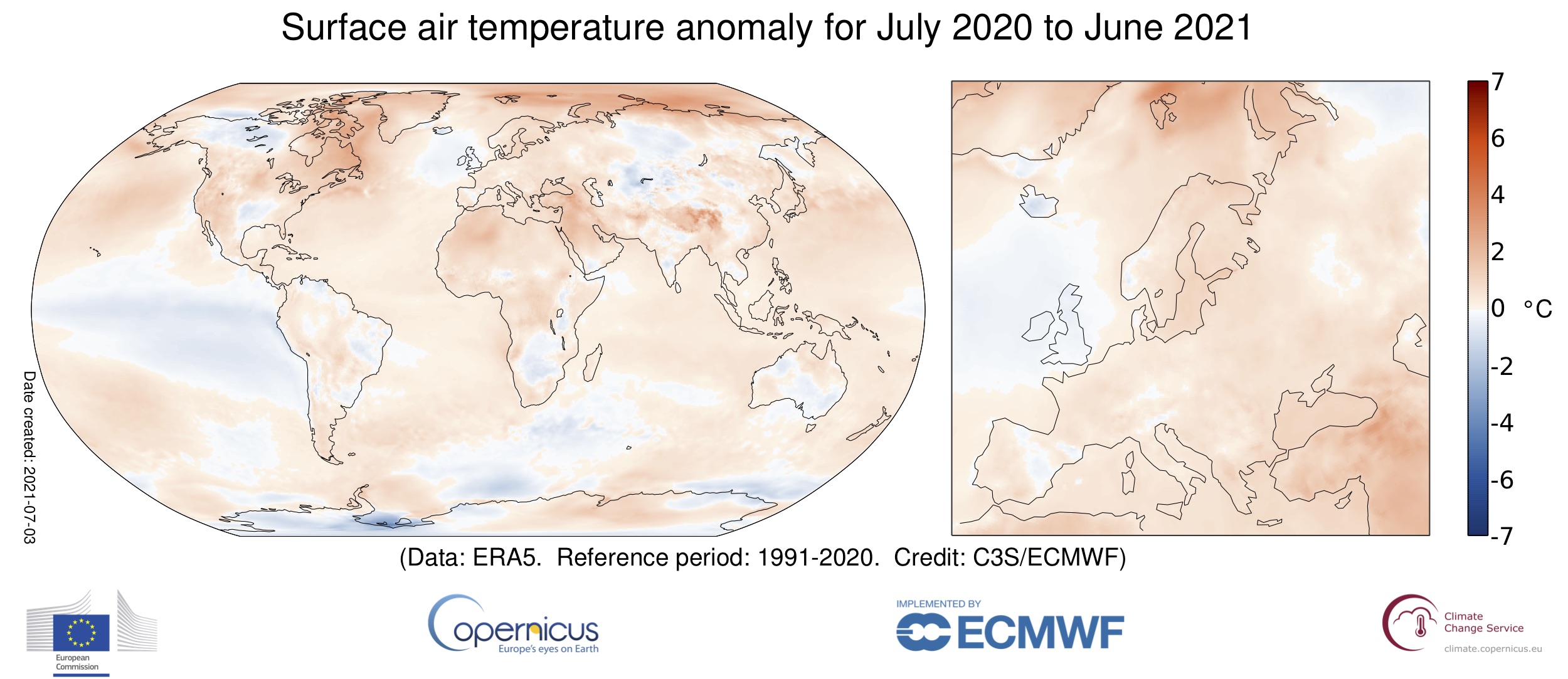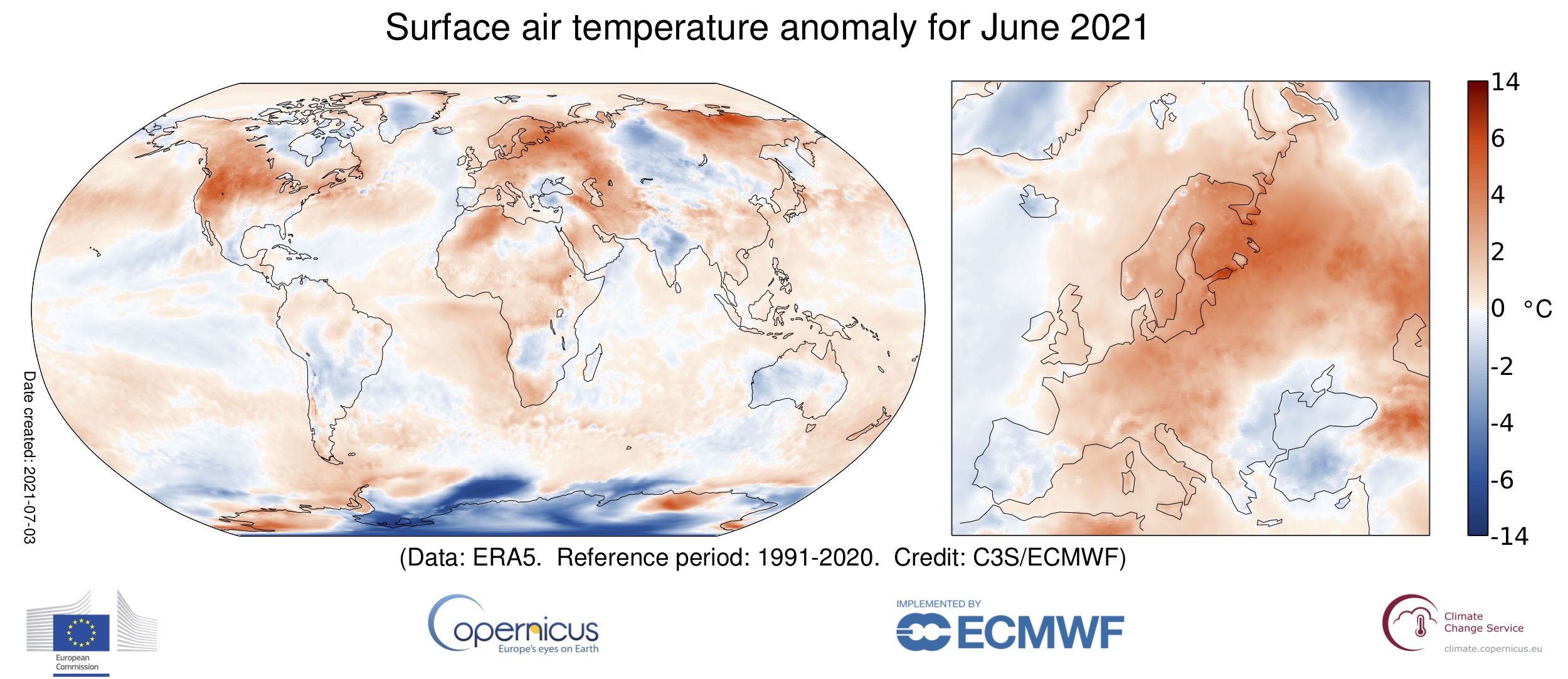
Muscovites cool off as the city experiences heatwave. /Reuters/Evgenia Novozhenina
Muscovites cool off as the city experiences heatwave. /Reuters/Evgenia Novozhenina
Last month was the hottest June on record in North America, stoked by a deadly heatwave searing across parts of the region. The data were released by the European Union's climate monitoring service, which said they demonstrated the impact of climate change.
Record-breaking heat scorched from the southwest to the northwest of the U.S. and into Canada, where the record daily temperatures were broken three days in a row in British Columbia.
READ MORE
Flying car takes off in Slovakia
Got COVID-19? Avoid your pets
Why UK government's changed attitude to COVID-19 cases
The region was 1.2 degrees Celsius above the 1991-2020 average in June, according to the Copernicus Climate Change Service (C3S).
"These heatwaves are not happening in a vacuum. They are happening in a global climate environment that is warming and which makes them more likely to occur," said C3S climate scientist Julien Nicolas.
Globally, June 2021 joins the same month in 2018 as the fourth warmest June.

Handout from the Copernicus Climate Change Service (C3S) detailing the temperature rises in June 2021 from June 2020.
Handout from the Copernicus Climate Change Service (C3S) detailing the temperature rises in June 2021 from June 2020.
Northern Europe breaks records
It was the second warmest June on record for Europe, while northern Siberia also experienced extremely high summer temperatures. Record June temperatures were recorded in Moscow and in Finland's capital Helsinki, where records date back to 1844.
Nordic countries are in the midst of an extreme summer. Kevo, in Lapland, recorded a temperature of 33.6 degrees Celsius on Sunday, while several Swedish regions also reported record highs for June.
"It is exceptional in Lapland to record temperatures" of over 32 degrees Celsius, Jari Tuovinen, a meteorologist at the Finnish Meteorological Institute, told the Finnish public broadcaster YLE. Adding that the Lapland heatwave is a result of prevailing high pressure causing warm air in the area.
Tuovinen sad that also "warm air has been brought in from Central Europe to the north through the Norwegian Sea."
In July, Norway's meteorological institute registered 34 degrees Celsius in Saltdal, a municipality near the Polar Circle, just 1.6 degrees Celsius below the country's all-time record.

Handout from the Copernicus Climate Change Service (C3S) detailing the temperature rises in June 2021 from the average taken from 1991-2020
Handout from the Copernicus Climate Change Service (C3S) detailing the temperature rises in June 2021 from the average taken from 1991-2020
More frequent, more intense
It is already well understood that heatwaves are occurring more frequently, are more intense and are lasting longer than they did in the past, Nicolas told AFP.
"The heatwaves that we saw last month in North America, western Russia and northern Siberia are just the latest examples of a trend that is projected to continue into the future and is tied to the warming of our global climate," he said.
According to a report by C3S, the regions affected also had arid soils, which noted that both wildfires and heat "posed threats to life."
Dozens of fires have ripped across parts of Canada in recent days, fueled by the deadly heatwave and tinder-dry conditions.
"What happened in Canada was a big jump with respect to the previous record," said Carlo Buontempo, the director of C3S.
"These hot records are a powerful reminder of the impact climate change could have on our lives," he told AFP.
Past six years the warmest on record
The 2015 Paris Agreement calls for capping the increase in global temperatures at "well below" 2 degrees Celsius and 1.5 degrees if possible.
Human activity has driven global temperatures up some 1.1 degrees Celsius so far, stoking increasingly fierce storms, extreme heatwaves, droughts and wildfires.
In May, the World Meteorological Organization and Britain's Met Office said there was a 40 percent chance of the annual average global temperature temporarily surpassing 1.5 degrees above pre-industrial temperatures within the next five years.
The past six years, including 2020, have been the six warmest on record.
Source(s): AFP
,AP

